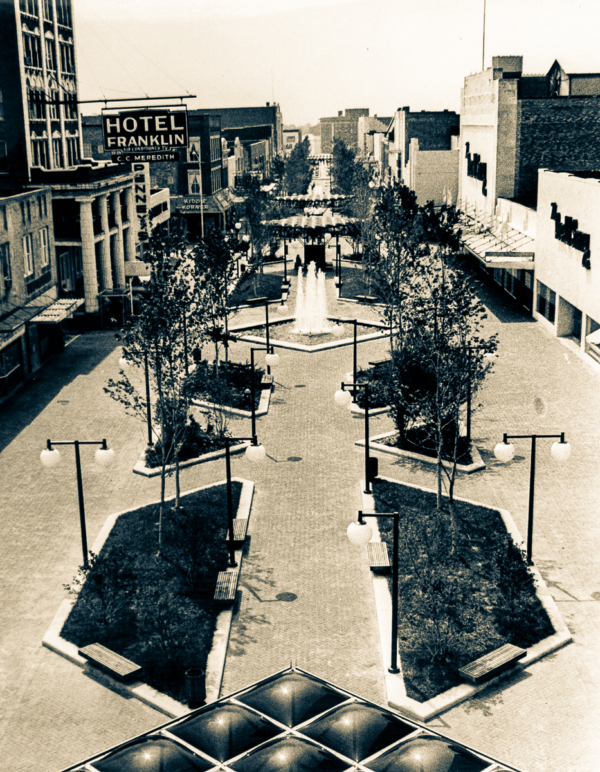Stop 12:
Mid-Town

Image courtesy of the Spartanburg County Public Libraries
A 1920s view of Main Street shows nearly every available lot filled to capacity. Downtown was also serviced by an extensive streetcar system, with lines running through much of downtown and branching out to mill villages further out.
Like Main Streets all over small town America, ours has ridden the cycles of boom, bust, and suburbanization. Many older residents here remember this as the Main Street Mall, which closed off traffic to all but pedestrians and cyclists during the 1970s and 1980s, and did little to reverse the flow of momentum to suburban malls.
A generation before, this had been the primary white shopping district where teenagers, housewives, and working men brushed by on crowded sidewalks. Here and there were movie theatres, restaurants, specialty stores, and offices, all anchored by several massive department stores. Look for the marker on the McMillan Pazdan Smith building that recognizes the civil rights sit-in at the Woolworth’s lunch counter in 1960, when brave black youths joined nationwide protests of white-only lunch counters and confronted the city’s unjust policy.
These days, Main Street is newly renovated and shops have flourished in pockets throughout. There’s even a free putt-putt course with miniaturized sculptures of local landmarks. Part of the Spartanburg Music Trail, which commemorates Spartanburg musicians who’ve gone on to share their talents with the wider world, runs along this section of Main Street. From the Marshall Tucker Band to bluesman Pink Anderson, Spartanburg has had an extensive music culture since at least the 1830s, when Spartanburg native William Walker published a national bestselling compilation of hymns, Southern Harmony.

Image courtesy of the Spartanburg County Historical Association
When it first opened in 1974, the Main Street Mall was promoted as downtown’s answer to the shopping centers that had popped up in every suburban neighborhood during the 1960s and 1970s.
Audio: Stop 12 - Main Street Mall
Side Trip: Hub City Bookshop
(next to Masonic Temple)
For a glimpse into Spartanburg's rich musical heritage, follow the signs for the Spartanburg Music Trail. Pick up a brochure on the Trail at the Hub City Bookshop.